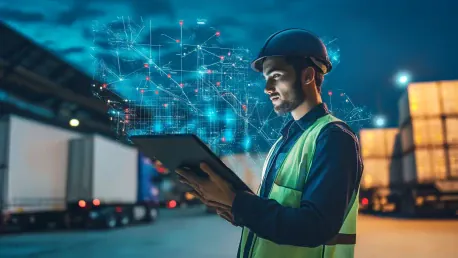In today’s fast-paced retail environment, seamless delivery and outstanding customer service are critical for e-commerce success. As demand for online shopping skyrockets, e-commerce businesses face mounting pressure to optimize their logistics networks. This article delves into various strategies that can revolutionize logistics operations, ensuring prompt order fulfillment, efficient returns, stellar customer service, and a commitment to sustainability. By adopting these strategies, e-commerce retailers can thrive in a competitive market.
Leveraging Technology for Efficiency
Technology plays an indispensable role in transforming logistics operations for e-commerce. Investing in advanced systems such as warehouse management software allows retailers to streamline various aspects of order processing, from the initial picking and packing of items to the final stage of shipping. This fosters a more organized and efficient workflow that can significantly reduce errors and enhance overall productivity. Route optimization software is another game-changing tool; it meticulously plans delivery routes to minimize travel distances, which in turn reduces both delivery times and operational costs. Beyond these logistical tools, tracking applications provide customers with real-time updates on their order status. This not only keeps the customer informed but also enhances their overall shopping experience by reducing uncertainty and anxiety about delivery times.AI and machine learning technologies have also become invaluable assets in the logistics sector. These sophisticated systems can predict demand patterns based on historical data, enabling better inventory management and staffing plans. This predictive capability helps retailers maintain optimal stock levels, reducing the likelihood of both overstocking and stockouts, both of which can be costly. Additionally, AI-driven algorithms can optimize staffing schedules, ensuring that sufficient manpower is available during peak times while reducing labor costs during slower periods. By integrating these advanced technologies, e-commerce retailers can tackle logistical challenges more effectively, meeting and even exceeding customer expectations in the process.
Expanding Fulfillment and Delivery Capabilities
To remain competitive in an increasingly crowded market, e-commerce retailers must expand their distribution networks closer to their customers. One effective strategy is the establishment of local fulfillment centers in high-density urban areas. These strategically positioned centers can drastically decrease last-mile delivery times, which are often the most time-consuming and costly part of the logistics chain. Collaborating with third-party logistics partners is another viable approach, allowing retailers to scale their operations more flexibly and efficiently. These partnerships can help to increase capacity and offer more streamlined logistics solutions, ultimately leading to faster and more reliable deliveries.In addition to expanding physical locations, offering expedited shipping options like same-day or next-day delivery can significantly enhance customer satisfaction. These faster delivery options meet the growing consumer demand for instant gratification and can set a retailer apart from competitors. On-demand delivery services add yet another layer of convenience, allowing customers to choose specific delivery windows that fit their schedules. Emerging technologies, such as drone delivery, are also making waves in the logistics sector, offering rapid short-range solutions that can further expedite the delivery process. Meanwhile, locker solutions provide customers with self-service pickup points at convenient locations, adding another flexible option for receiving orders. By implementing these multifaceted strategies, e-commerce retailers can improve delivery times and overall customer satisfaction.
Streamlining the Returns Process
A seamless returns process is pivotal for maintaining customer confidence and ensuring repeat business. Offering free and easy returns, with diverse drop-off points and simplified paperwork, makes the process hassle-free for customers and significantly boosts their satisfaction. This ease of return can often be a deciding factor for customers when choosing where to shop online. Digital return requests further add to customer convenience by allowing them to initiate returns from the comfort of their home through online platforms. This reduces the need for physical interaction and speeds up the process, making it more efficient for both the retailer and the customer.The speed at which refunds are processed is another critical aspect of the returns experience. Promptly processing refunds fosters a positive post-purchase experience, demonstrating to customers that the retailer values their satisfaction even after the initial sale is completed. This efficient handling of returns not only saves time but also strengthens customer loyalty, encouraging repeat business. Moreover, a streamlined returns process can also provide valuable data for retailers, helping to identify common issues with products or services that need addressing. By implementing these more efficient methods for handling returns, e-commerce retailers can significantly improve customer satisfaction and build a loyal customer base.
Proactive Customer Service and Communication
Exceptional customer service is a cornerstone of a positive shopping experience in the e-commerce sector. Self-service options like chatbots can handle common customer inquiries quickly and efficiently, freeing up human representatives to focus on more complex issues that require a personal touch. These automated systems can provide immediate answers to frequently asked questions, reducing wait times and improving the overall customer experience. Despite the efficiency of automated systems, maintaining call centers for urgent or complicated issues remains vital. These centers ensure that customers can receive the support they need in real-time, which is crucial for resolving concerns that cannot be handled by automated means.Proactive communication is another essential element of effective customer service. Sending proactive notifications, such as emails or text messages about order status updates, keeps customers well-informed throughout the delivery process. This transparency not only builds trust but also enhances the overall customer experience. Post-delivery surveys can provide valuable feedback, helping retailers identify and address pain points in their logistics and customer service processes. Extending customer service hours to include nights and weekends ensures that support is available when customers need it most, catering to a diverse range of schedules and needs. These proactive measures collectively help build long-term customer trust and loyalty, which are essential for sustainable success in the e-commerce industry.
Prioritizing Sustainability
Sustainability is becoming an increasingly important factor in consumer purchasing decisions, and it can significantly impact brand loyalty in the e-commerce sector. Utilizing eco-friendly packaging materials is a straightforward yet effective way to reduce waste and appeal to environmentally conscious customers. By opting for recyclable and biodegradable materials, retailers can minimize their environmental footprint and send a positive message about their commitment to sustainability. Route optimization not only lowers operational costs but also contributes to a greener footprint by minimizing emissions. This dual benefit makes it a crucial strategy for e-commerce retailers looking to enhance both efficiency and sustainability.Many companies are now offering carbon-neutral shipping options to meet growing customer expectations for eco-friendly practices. This involves calculating the carbon emissions produced by the shipping process and offsetting them through various means, such as investing in renewable energy projects or reforestation efforts. Piloting electric vehicle delivery fleets is another tangible way to demonstrate a commitment to sustainability. These electric fleets can significantly reduce emissions compared to traditional gasoline-powered vehicles. Clearly showcasing these sustainability efforts can enhance a brand’s image, attracting more customers who prioritize environmental responsibility. By prioritizing sustainability, e-commerce retailers can not only contribute to a healthier planet but also build stronger connections with their customer base.
Tracking Logistics Efficiency
In today’s fast-paced retail world, exceptional delivery and superior customer service are vital for the success of e-commerce businesses. With the skyrocketing demand for online shopping, e-commerce companies are under increasing pressure to enhance their logistics operations. This article explores various strategies that can revolutionize logistics efforts, ensuring timely order fulfillment, efficient handling of returns, excellent customer service, and a strong commitment to sustainability. Key strategies include leveraging advanced technology such as automation and AI for inventory management and order processing, thereby reducing errors and speeding up operations. Fostering partnerships with reliable third-party logistics providers can expand reach and improve delivery times. Additionally, implementing sustainable practices such as eco-friendly packaging and carbon-neutral shipping options can appeal to the environmentally conscious consumer. By adopting these innovative approaches, e-commerce retailers can not only survive but thrive in a highly competitive market, meeting customer expectations while also doing their part to protect the planet.









